The Inca Bridge Q'eswachaka, declared "Intangible Cultural Heritage" by UNESCO, is one of the most impressive tourist destinations in Cusco. Located about 2 hours and 45 minutes from Cusco, in the district of Canas, this hanging bridge is a unique example of Inca engineering and local craftsmanship.
The bridge is made of junco ropes , tied with a special technique called Q'eswa, which is done with the assistance of local residents from the region. During the Tour to the Inca Bridge Q'eswachaka, visitors can enjoy a hike to reach the bridge. The landscape is stunning, with mountain views and rivers flowing below. They will also learn about the history and culture of the region while appreciating the natural beauty of the area. Once they reach the bridge, they can walk across it and admiring the incredible skill of the QUECHUAS with its impressive architecture and engineering that currently survives to modernity, the Q'eswachaka Inca Bridge offers a unique and unforgettable experience for travelers seeking a distinctive destination in Peru.

We will pick you up from your hotel in Cusco at 4:00 a.m. We will travel south on the road leading to the province of Canas. Along the way, we will observe the Pomacanchi Lagoon we will also visit the Pabellones volcano with its unique size and the pass of the same name.
We will be arriving at approximately 9:00 a.m. in the morning to “Q'eswachaka” we will have the opportunity to visit its ancestral bridge. This bridge is a legacy of a millennia-old tradition of art, architectural technique, and Andean culture. It is a sacred symbol among local communities and is built over the majestic Apurímac River, located in the province of Canas. The construction of the Inca Bridge begins when the community members cut out the great Qóya de la Pachamama, a strong and resistant plant that is a variety of the ICHU and is the main material with which it is made. The last Inca bridge that suffers from the deterioration of its material (straw) every year due to the inclement weather of the mountains, so it requires annual maintenance every June, which consists of a total reconstruction, these are days of celebration for the surrounding people who come to this area, being an ancestral custom, after having passed this ancestral bridge and contemplating the valley of the Apurimac River, we will have lunch in a local restaurant at noon.
After a previous rest and finishing our lunch, we will return to Cusco, arriving at 04:00 p.m. to leave them at your hotel.

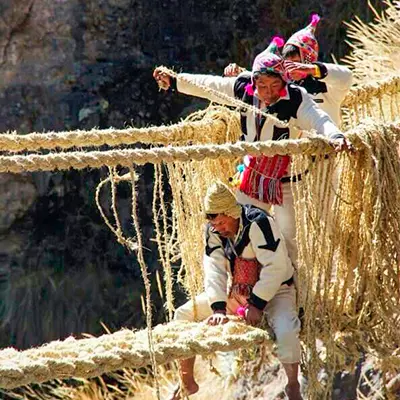
INCLUDES:
NOT INCLUDED:
RECOMMENDATIONS:
We will pick you up at 4:00 a.m. from your hotel in Cusco for a journey to the province of Canas. This is an interesting and comprehensive option for those who want to explore the southern region of Cusco. It combines history, nature, culture, and geography of this beautiful corner of Peru. During the journey we will observe the Huacarpay lagoon, the archaeological center of Pikillaqta,
At 06:30 a.m. hrs. We will be arriving at the district of Cusipata where we will have our breakfast, after a short rest we will continue the trip and visit the districts where Tupac Amaru II lived, a Peruvian indigenous leader and the leader of the "Great Rebellion" against the Spanish crown in Hispano-America, lived. The route will also take us past the Pabellones Volcano in Yanaoca, a small volcano of approximately 4 meters in diameter with its unique size, located in the district of Tungasuca, where we can appreciate and have a view of Pampamarca Lagoon.
We will arrive at “Queswachaca” at 9:00 a.m. which is located at 3,792 meters above sea level. (12,440.94 feet) and we will have the opportunity to visit its ancestral bridge, which is an architectural and cultural heritage of the QUECHUAS, the Inca bridge of “Q'eswachaka” (Straw Bridge) is built over the majestic Apurímac River, located in the province of Canas. The last Inca bridge deteriorates due to the degradation of its material (straw) caused by the harsh climate of the highlands, requiring an annual maintenance that consists of a complete reconstruction.
The reconstruction is carried out by the peasant communities of Chaupibamda, Choccayhua, Ccollana, Quehue, and Huinchiri, all belonging to the Quehue district. The bridge's dimensions are 33 meters in length and 1.20 meters in width, and the material used is solely straw (Ichu), which is braided by the highland inhabitants. This process of braiding straw, a plant fiber, involves sun drying, pounding, and flattening, resulting in long and fine ropes (QUESWAS), which are then twisted and braided again. Our journey back to Cusco will include a visit to the impressive Ccarañahui or Q'arañahui caves, promising a spectacular conclusion to the tour.
Legend has it that the Incas used to visit the cave to communicate spiritually with their gods, adding a mystical and spiritual touch to this place. This underscores the cultural and historical significance it holds for the region. The presence of a mysterious lake at the bottom of the cave adds an element of mystery and natural beauty, making it a fascinating destination for travelers. We return to Cusco after a day of exploration and discovery. Overall, our "Q'eswachaka" Inca Bridge Tour offers a complete and exciting experience, combining history, culture, nature, and mystery, providing travelers with a comprehensive view of the richness and diversity offered by the Cusco region in Peru.
Finally we will have our lunch at midday and we will be arriving in Cusco at 04:00 p.m. approximately to drop them off at their hotel, closing with a flourish this exciting and enriching Tour to the Inca Bridge of “Q'eswachaka”.
ANNUAL RECONSTRUCTION
The “Q'eswachaka” bridge requires annual maintenance due to the decomposition of the straw (Ichu) used in its construction. Since Inca times, the reconstruction has taken place over three days (the second Sunday of June), culminating in a fourth-day festival where various indigenous dances can be observed. This event provides an opportunity to share unique traditions and customs with the world.
INCLUDES:
NOT INCLUDED:
RECOMMENDATIONS:
Tour to the Inca Bridge of Q'eswachaka
GUIDED IN GROUP
Tour to the Inca Bridge of Q'eswachaka
GUIDED IN PRIVATE
To start your reservation process please send us the following information:

As condições climáticas variam dependendo das cidades e da estação do ano em que você decide fazer sua viagem, a altura, a água, a troca de moeda, a voltagem elétrica e muitos outros dados a serem preparados. Esta informação irá ajudá-lo a organizar a sua viagem e aproveitar a sua estadia sem preocupações.
Pela geografia de Perú o clima é variado pelo que lhe recomendamos consultar especificamente sobre a situação climática dos lugares que vai visitar e as datas que vai realizar a viagem.
A hora peruana é GMT-5 horas e é a mesma que a hora normal da zona Este dos Estados Unidos de América.
Os cidadãos da maior parte dos países de América e Europa Ocidental não requerem de visa para visitar o Peru.
Se você é de outro pais lhe recomendamos aproximar-se ao consulado peruano em seu Pais para obter mais Informação.
A moeda oficial de Peru é o “Sol” (S/.) Dividido em 100 cêntimos. Circula em moedas de 0.10, 0.20 e 0.50 cêntimos; e de 1, 2 e 5 Soles. E em bilhetes temos de 10, 20, 50, 100 e 200 Soles.
A voltagem elétrica é de 220 volts, tem uma frequência de 60 hertz e as tomadas elétricas geralmente utilizados são de tipo A, B e C.



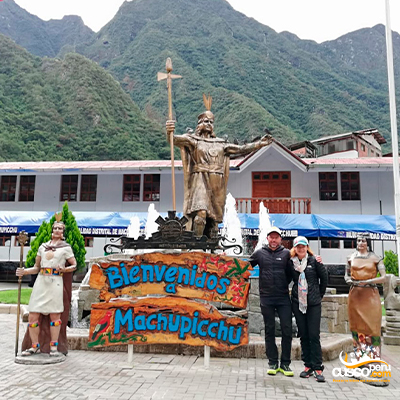























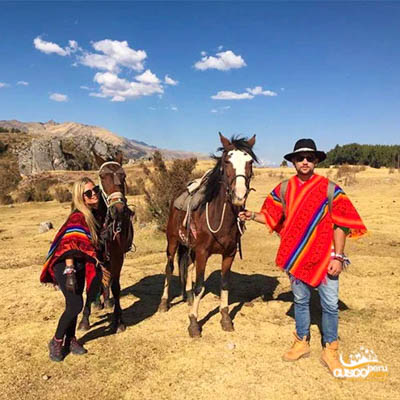


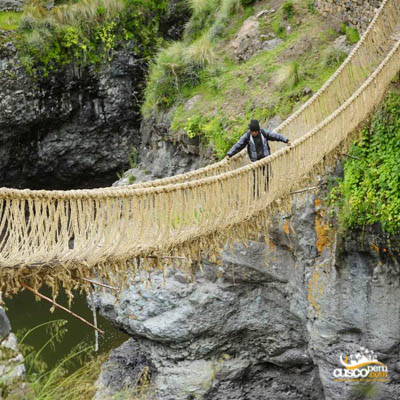



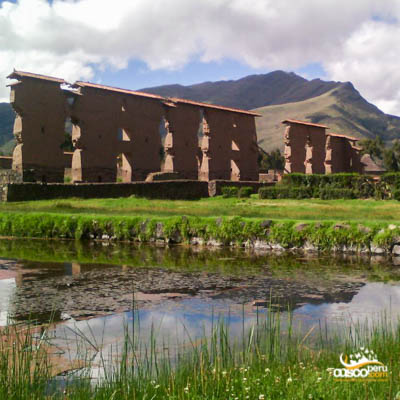

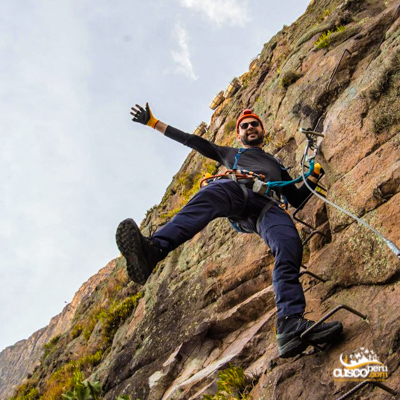







Happy passengers